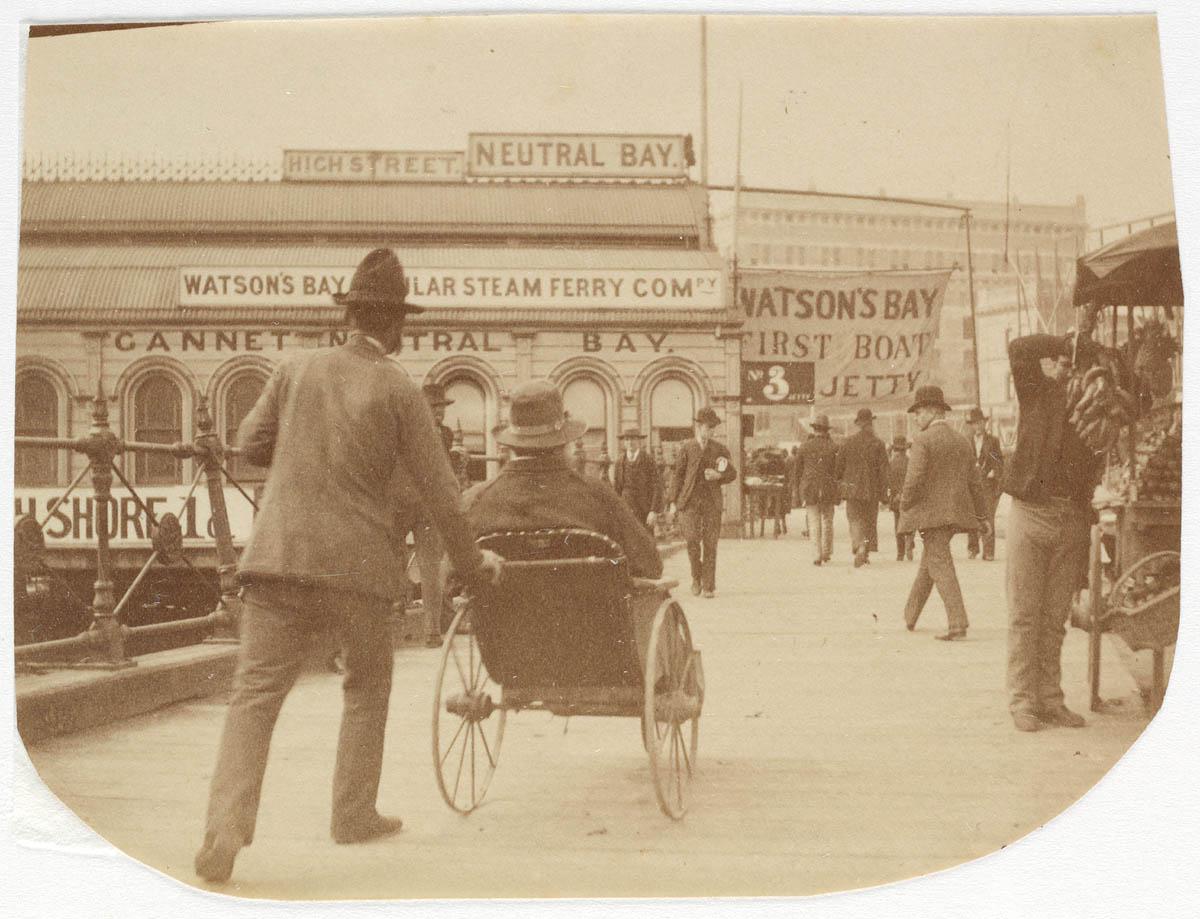On a sunny Sydney day in the 1880s, as Circular Quay bustled with commuters and street traders going about their daily business, one young man stood stock still — a small hand-held camera tucked discretely at his side. While the crowds swarmed around him, Arthur Syer was taking photographs of passers-by without their knowledge. The images taken that day are among the world’s earliest candid photographs, part of the street photography phenomenon which has seen such an enthusiastic revival in recent years with the advent of cameras in mobile phones and social media.
Invented in about 1880, the hand-held camera — initially marketed as a ‘Detective Camera’ — was the latest in photographic gadgetry. Along with dry plate negative technology, it was the most significant development in photography in decades. Photographers could now venture out of their studios unencumbered by heavy equipment. Their supply of ready-prepared negatives could be loaded and replenished without recourse to a darkroom. With a lens pre-set to take photographs from a distance of six feet, early models were intended to be used discreetly where raising the camera to eye height would have given the game away.
Looking at these photographs today, some Sydney landmarks are recognisable but others are difficult to place. The types of people shown are a mix of the familiar and unfamiliar — family groups, commuter crowds and sporting event spectators alongside hawkers, street sweepers and widows in black.
The name ‘A.K. Syer’ is stamped on several prints, but not much is known about this photographer. We do know that from about 1880 he lived with his widowed mother and siblings at 165 Alfred Street, Neutral Bay, where his older brother, the artist Walter Syer, gave ‘character drawing’ lessons. It was probably through Walter that Arthur met English cartoonist Phil May, who had been brought to Australia by the Bulletin magazine to provide black-and-white art for its weekly editions between 1886 and 1888. According to Walter, May used Arthur’s photographs in crafting character studies for the magazine. Arthur later followed the artist to England, where he continued to produce source images of European subject matter until May’s death in 1903.
The Library holds a collection of about 280 Syer images. Explore a selection of digitised images here.

